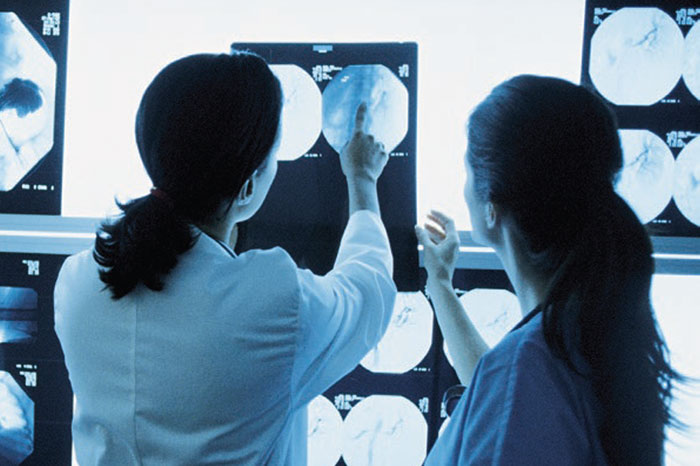A radiologist is a medical doctor who plays a large role in your medical care. Radiologists are often referred to as the “doctor’s doctor” in healthcare circles. They play an integral role as a consultant to your physician by aiding them in selecting the proper medical imaging exams and interpreting the results. The results of your X-ray, CAT scan, MRI, ultrasound, mammogram, etc., are pivotal in giving your doctor an accurate diagnosis and guiding your treatment.
Radiologists are Medical Doctors
Like all other physicians, radiologists graduate from accredited medical schools and pass their board examinations for licensing. After medical school (four years) and internships (one year), they also complete a minimum four year residency. Many radiologists will then complete a fellowship following their residency. A fellowship involves an additional one or two years of training in a radiological specialty, including body imaging, breast imaging, MRI, neuroradiology, sports medicine, musculoskeletal, cardiovascular radiology and more.
Radiologist or Technologist?
Patients are often confused about a radiologist’s role in their care. Surveys show that less than 20% of patients knew that radiologists were medical doctors. 76% confused their radiologist doctor with their technologists who conducted their exam. As many as 40% of patients had no idea that radiologists played a role in patient care.
The technologists who perform your exam might be your first or only point of contact at the medical imaging center. Technologists have two to three years of training. They are not medical doctors. Rather, like the dental hygienist in the dentist’s office or the nurse assistant at the long-term care facility, radiology technologists assist the radiologist with conducting procedures.
Behind the Scenes – the steps after you finish your exam
Once your radiologist looks at the images of your scan (which in some cases, like MRI’s, may include thousands of diagnostic images), they provide a report for your referring physician. Depending on the complexity of your case, your referring physician will often review the images and consult with the radiologist and then call you with the results or schedule an appointment to go over the details and explain what your imaging study means to you and your treatment plan.
Radiologists often perform exams on patients as well. Certain procedures require radiologists to administer therapeutic or diagnostic dye injections (ex. arthrograms, angiograms). They also perform biopsies and oversee other real-time medical imaging exams.
The Expanding Role of the Radiologist in Healthcare
Your radiologist’s expertise makes them an invaluable member of your healthcare team.
Most patients require medical imaging for diagnosis at some point in their medical care.
Hopefully the next time you visit a medical imaging center or radiology department, you will have a better idea of what happens, who is involved in getting your images and reports and how the radiologist helps your doctor diagnose and manage your medical care.


